There can be your advertisement
300x150
Kitchen Revolution: 6 Milestone Inventions for the Kitchen
The electric stove, refrigerator, coffee maker — familiar household appliances found in many homes. Today, when pouring yourself a cup of coffee in the morning or blending a smoothie in a blender, few people think about their inventors. And yet, it's truly interesting who and when invented the things we can no longer imagine our daily life without.
Electric Stove
It all started in 1883 in Canada, when an electrical appliance merchant Thomas Aherne conceived the idea of creating safer electric stoves: gas models often caused fires and couldn't be used everywhere. Indeed, when in 1893 at the World's Fair in Chicago he demonstrated the first prototype, it failed to attract public interest.
It took another 25 years for the idea to cross over to another continent, Germany, where German Emil Rathenau eventually arranged mass production of electric stoves.
The first models resembled ordinary sideboards, with metal plates instead of traditional burners placed on legs next to the stove and serving as support for cookware. They heated for two to three hours, were expensive — but there were many people willing to buy an electric stove.
Microwave Oven
The ability to heat or cook food in just a few minutes in a microwave oven is due to American physicist Percy Spencer. According to legend, during one of his shifts, Spencer accidentally placed a sandwich (or in another version, a piece of chocolate) on an active device generating microwaves. It's not surprising that it heated up. More precisely, it’s not surprising for us now, but in 1945 it was a real discovery that inspired the scientist to create a device for quick defrosting of food products.

The invention was initially applied in military dining halls: microwaves were not suitable for home use due to their large size and weight. Japanese scientists helped by reducing dimensions, adding a rotating plate, and an integrated control system.
In the late 1970s, the era of microwave ovens began. The first Miele model — the M 690 — was small enough to fit on any table at that time. Later, they released a modification of this model that could be built-in.

Coffee Machine
Most people, if not all, enjoy coffee. It’s no wonder that the first coffee maker appeared as early as 1800: its invention is attributed to French archbishop Jean-Baptiste de Belloy-Moraguel. Essentially, it was the first drip coffee maker: drops of water seeped through a layer of ground coffee beans. It’s not necessary to say that preparing coffee in this way could take hours, and the accelerating pace of life demanded more efficient ways to prepare the energizing drink.
Such methods were found: 1827 marked two inventions. The device by Parisian tinman Moritz consisted of two containers and a filter with coffee. When the water in the lower container boiled, the coffee maker was flipped — yielding a rather strong beverage.
And the first prototype of a geyser coffee maker by engineer Lawrence, which operated under water pressure. In 1833, another variant appeared, patented by craftsman Samuel Parker from London. A hundred years later, enterprising Italian industrialist Alfonso Bialetti launched the improved “Moka Express” coffee maker into mass production.
However, early models had the issue of preserving the taste and aroma of coffee beans. They couldn’t provide optimal temperature, pressure, and other important conditions for preparing proper coffee. Gradually, the idea of creating coffee machines was embraced by various brands, and simple coffee makers evolved into appliances that even a professional barista would struggle to compete with.
This is evolution!
The CVA 7845 coffee machine from Miele can do everything and more: for example, brew 25 different coffee and tea drinks, selecting the optimal water temperature for each. The parameters vary depending on the type of coffee beans and drink: grind, amount of coffee, water temperature, need for pre-brewing — all these factors significantly affect the taste. By setting the ideal parameter combination for yourself, you can save settings in the coffee machine's memory.
Controlling household appliances from a smartphone is no longer surprising to many. However, owners of most coffee makers still need to pour water into their reservoirs themselves. But the CVA 7845 coffee machine has an advantage in this regard: it includes the DirectWater option, which allows connecting the appliance to the water supply system. This means that as soon as you wake up, you can start brewing your energizing drink with one button and not worry about whether the water container is full — the appliance will fill it on its own.
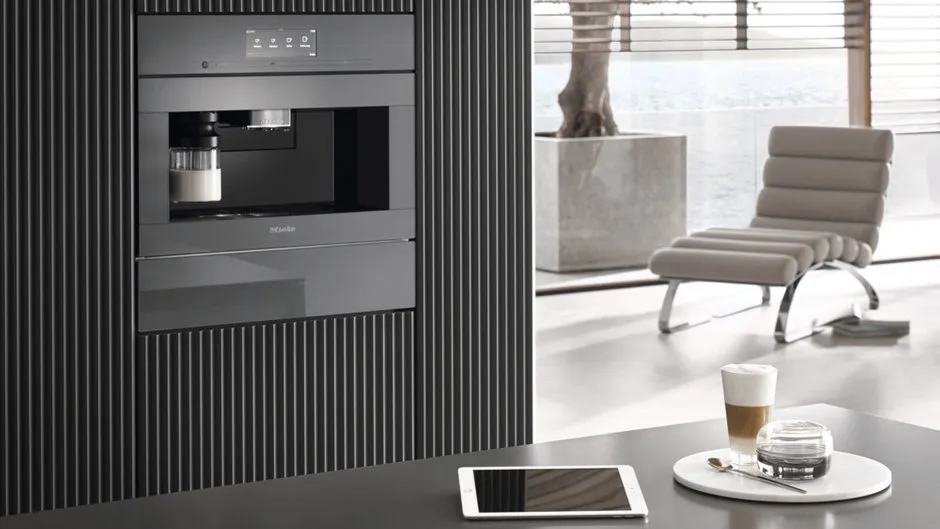
By the way, the new coffee machine also takes care of its cleaning and maintenance: it has an automatic scale removal function AutoDescale and an AutoClean feature that frees you from having to rinse the milk delivery tubes and de-grease the brewing mechanism.
What remains for you? Simply enjoy delicious coffee.
Refrigerator
In the past, people used ice or snow reserves to keep food and drinks cool or attempted to adapt cold streams. Only in 1910, after several experiments, did the first American refrigerator — a compressor unit by Odifreddi — appear. It resembled a chest, finished in red wood. Beautifully, functionally, but very expensive — it cost as much as a car.
The process advanced when in the mid-19th century, American John Gorrie discovered a method for producing artificial ice. In Europe, Alfred Mellooz created a model with an autonomous compressor in 1915, which was placed at the bottom of the refrigerator. The idea of using freon for cooling was proposed by American Thomas Midgley, and in 1928, refrigerators with freon were launched into mass production.
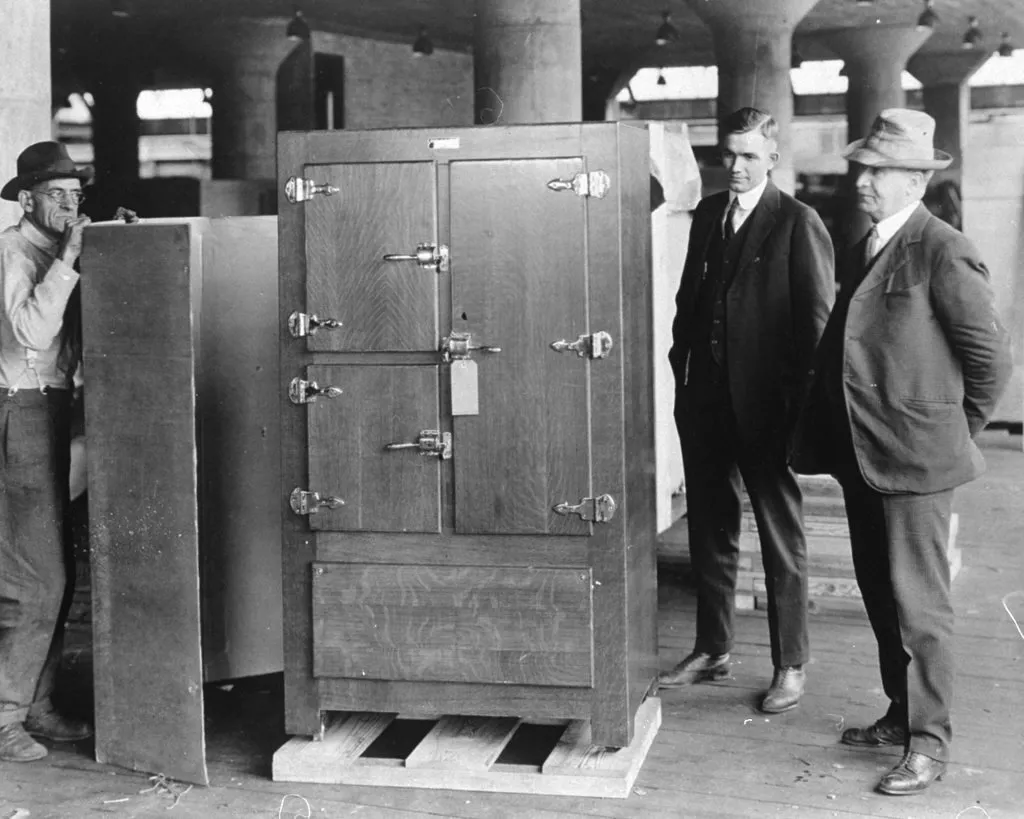
Dishwasher
In Europe, the history of dishwashers began with German company Miele, founded in the late 19th century by Karl Miele and Reinhard Zinkann. By that time, their company was already known for manufacturing metal and wooden washing machines. The first electric dishwasher designed by Miele in 1929 was a round metal tub with two baskets for dishes and cutlery. There was no connection to the water supply system, so the dishwasher had to be filled manually. For a few minutes, water was sprayed onto the dishes using a rotating electric propeller. Most housewives found washing dishes by hand much simpler, and there was little demand for the innovation.
It wasn’t until 1963 that Miele introduced the world’s first automated dishwasher — the G45. In 1978, microprocessor control and sensors were added to Miele products, which not only simplified usage but also reduced water and electricity consumption.
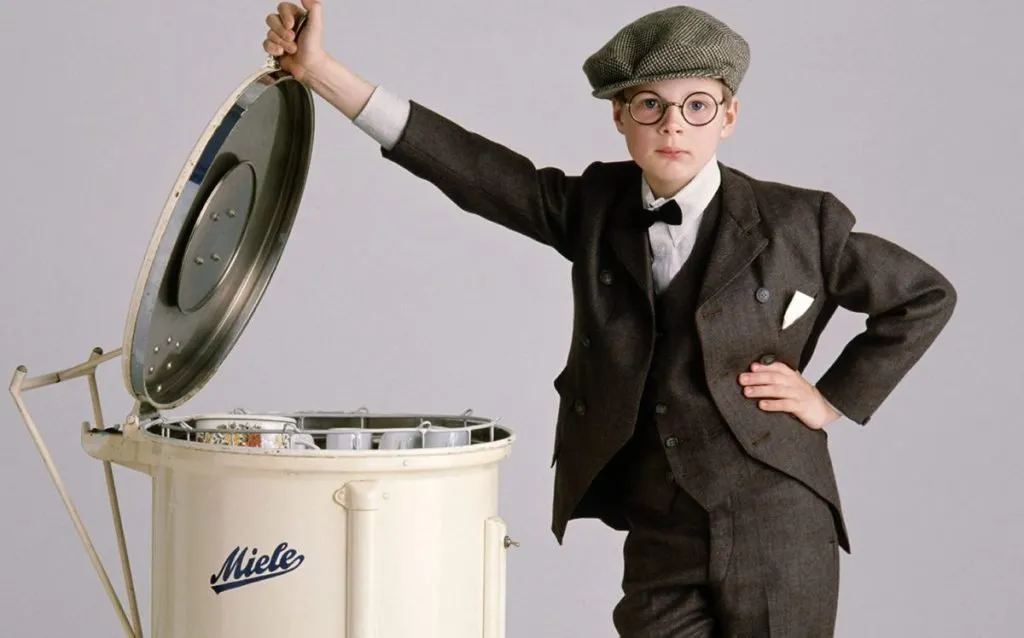
1987 marked another milestone in dishwasher history: Miele patented the slide-out tray for cutlery. In modern models, it is adjustable in width and height. Another useful function is AutoOpen, which automatically opens the dishwasher door at the end of a cycle.
For lovers of minimalist design, in 2013 the company introduced a model with Knock2Open function: gently tapping the front panel opens the dishwasher door without using the handle.
In 2019, the company launched the G7000 dishwasher with AutoDos function, which automatically dispenses cleaning agents. Another useful feature is AutoStart, which programs the appliance to start at a convenient time for you.
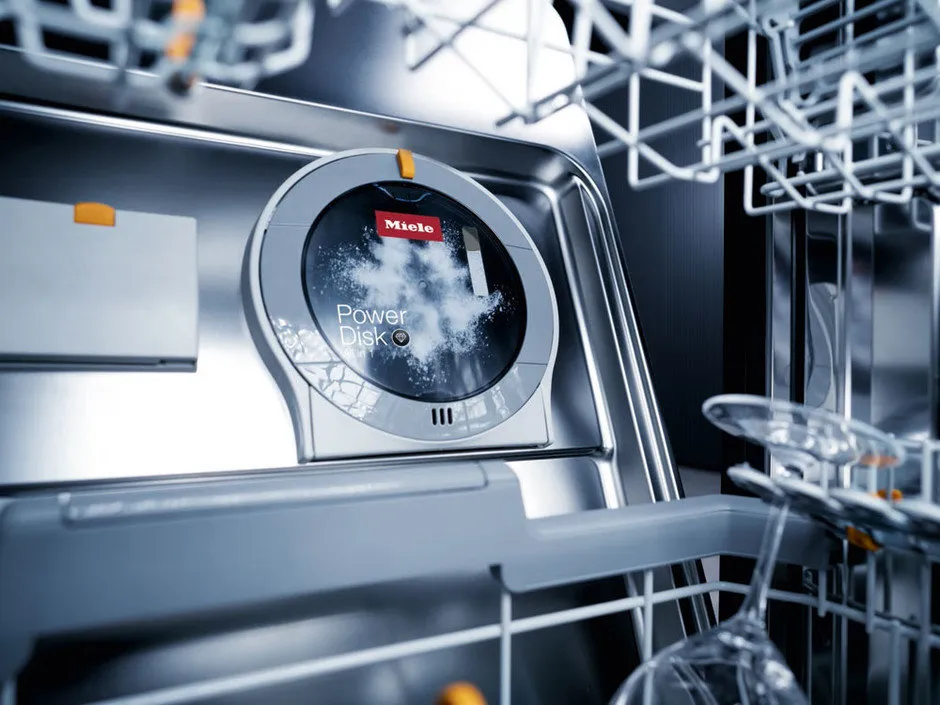
Mixer
The first mixer was invented by engineer Herbert Johnson for bakery shops in 1908. They weren’t suitable for home use: the appliances weighed about 29 kilograms and cost as much as a brand-new Ford.
To win the trust of housewives, the mixer had to get lighter and cheaper. Eventually, the first compact and relatively quiet device that any family could afford was put on sale in 1919.
More articles:
 Must-See: Stone Door, Glass Wardrobe, and Other New Arrivals
Must-See: Stone Door, Glass Wardrobe, and Other New Arrivals How to Arrange a Teen's Room: Ideas + Tips
How to Arrange a Teen's Room: Ideas + Tips Choosing Interior Doors: What's New on the Market?
Choosing Interior Doors: What's New on the Market? New IKEA items, transforming a concrete box and 8 more August hits
New IKEA items, transforming a concrete box and 8 more August hits New Trend: Doors and Furniture in One Style
New Trend: Doors and Furniture in One Style 10 Design Hacks We Spotted in This Month's Projects
10 Design Hacks We Spotted in This Month's Projects 52 m² under the Swedish sky: a two-level apartment in a mansard
52 m² under the Swedish sky: a two-level apartment in a mansard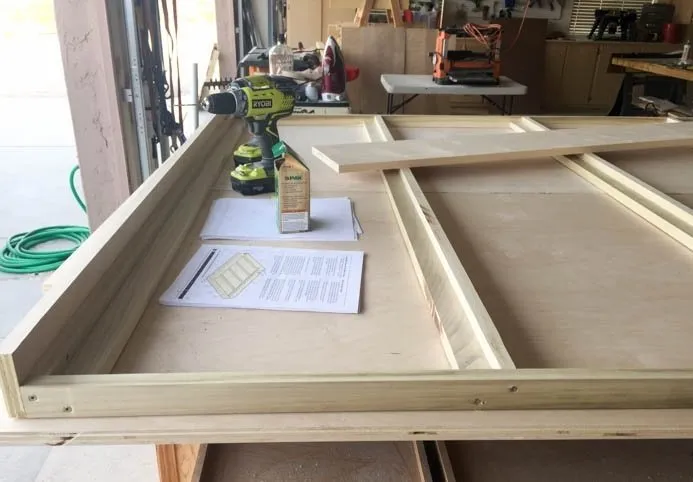 Space-saving: making a bed-shelf in the IKEA style
Space-saving: making a bed-shelf in the IKEA style